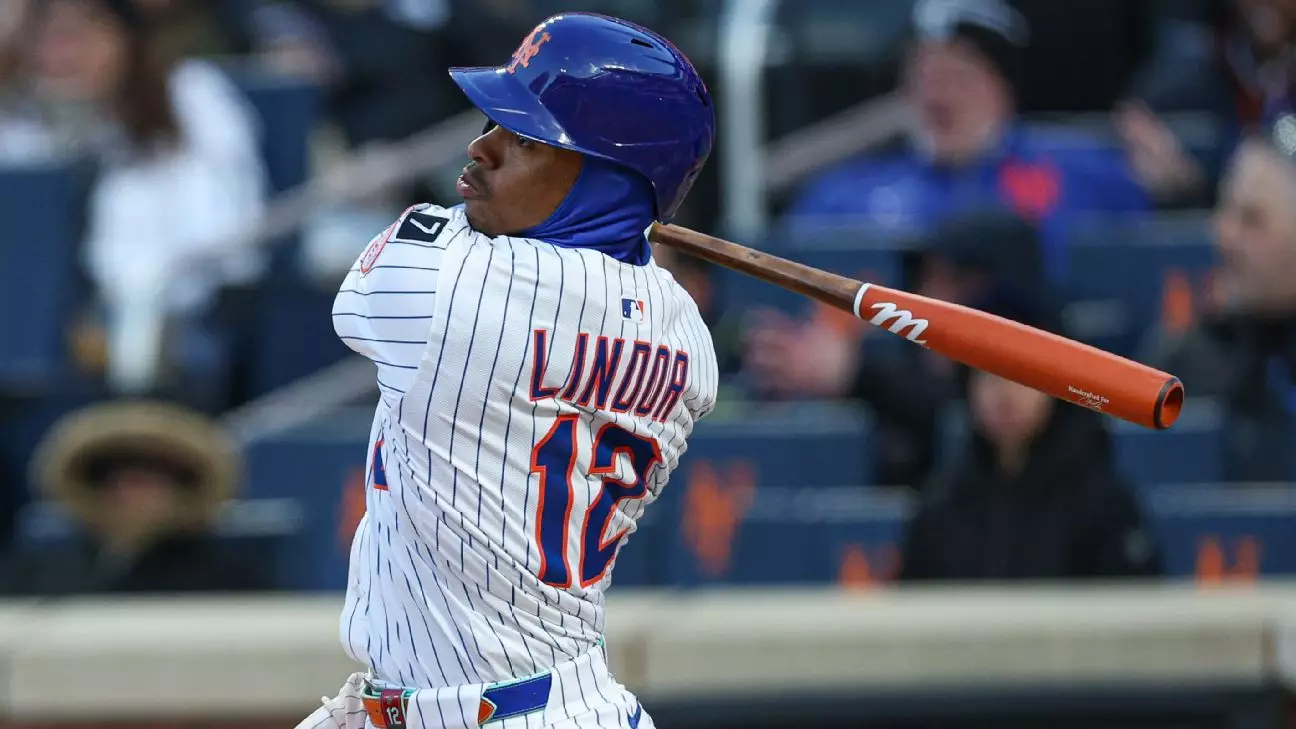In the world of professional baseball, consistency is often regarded as the hallmark of greatness. Yet, even the most talented athletes face periods of struggle that test their resolve and redefine their roles within their teams. Francisco Lindor’s recent experiences exemplify this reality: a star player grappling with a slumping form amidst mounting pressure, only to emerge stronger through strategic adjustments and unwavering resilience. His journey underscores that adversity, if approached with the right mindset, can serve as a catalyst for renewed greatness.
Initially, Lindor’s prolonged slump—an abysmal stretch of 15 games with a batting average tumbling from .289 to .255—highlighted the fragile nature of confidence in high-stakes sports. His inability to find consistency at the plate not only affected his individual stats but also cast shadows over the Mets’ broader performance, as they struggled with four consecutive losses amidst a 14-of-17 performance decline. It’s a stark reminder that in baseball, even a star’s fate is intertwined with team momentum, and corrections often necessitate bold strategic moves.
The decision to bench Lindor from the leadoff position—a role he held for 191 consecutive starts—marked a pivotal turning point. This move was more than a tactical adjustment; it was a statement that adaptation is crucial for survival at the highest level. The Mets shifted Brandon Nimmo into the leadoff spot, a role he had previously filled successfully, and Lindor down to second as the designated hitter. The immediate impact was evident: Nimmo’s grand slam ignited a potent offensive surge, and Lindor responded with a home run, rekindling his offensive fire.
This change illuminated a critical lesson: sometimes, stepping back or altering one’s usual approach can unlock new levels of performance. Lindor, who had been a consistent fixture at the top of the lineup since joining the Mets, exemplified humility and strategic thinking by embracing a different role. His subsequent contributions—including a timely RBI single—serves as proof that resilience in baseball involves not just physical talent but mental agility.
Beyond the immediate game, Lindor’s resilience extends into his recognition and leadership. Securing the starting shortstop spot for the National League All-Star team for the first time since joining the Mets—an achievement that came after years of being overlooked despite peer successes—demonstrates his capacity to rebound from setbacks. His fan-favorite selection, edging out Mookie Betts, underscores that perseverance and continued excellence resonate deeply with fans and peers alike. It’s a powerful assertion that even in the face of setbacks, sustained effort and adaptability can elevate a player to elite levels of recognition.
Lindor’s story also reveals an essential truth about athlete identity. His past accomplishments—multiple Silver Slugger awards, near-MVP finishes, and All-Star selections—are a testament to his talent. Yet, the recent stretch demonstrates that high-performing athletes are not immune to fluctuations, and early-season struggles do not define their entire careers. Instead, their ability to learn from hardship, recalibrate, and come back stronger is what elevates them from good to legendary.
What makes Lindor’s narrative particularly inspiring is the deliberate shift in mindset it encourages. In sports, as in life, setbacks often serve as disguised opportunities. His willingness to accept change, embrace new roles, and continue pushing forward proves that true resilience involves facing adversity without capitulating. By winning the fan vote to start in Atlanta, Lindor isn’t just earning a spot at the midsummer showcase—it’s a recognition of a resilient spirit that refuses to be crushed by temporary setbacks.
Ultimately, Lindor’s experience underscores that greatness is a dynamic, ongoing journey. Success isn’t solely about flawless performance but about the courage to confront flaws head-on and adapt. His resurgence, fueled by strategic change and mental toughness, exemplifies the power of resilience—an attribute not only vital for athletes but for anyone aiming to turn obstacles into stepping stones toward their goals.

